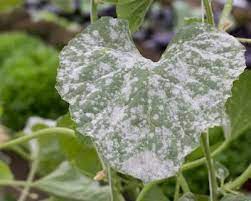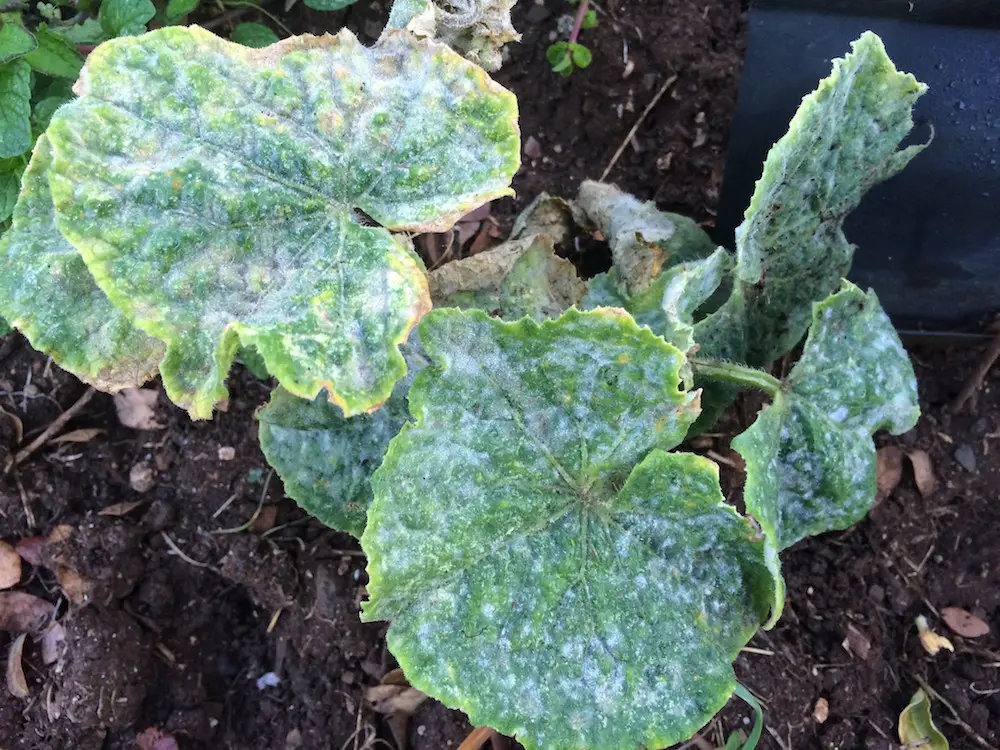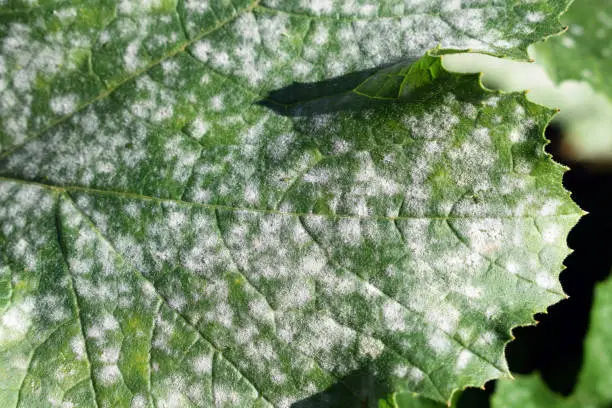Description of powdery mildew
Powdery mildew is a fungal disease that affects many of our landscape plants, flowers, vegetables and fruits.


Symptoms
It is a simple one to recognize. Infected plants will have a white powdery substance on their upper leaf surfaces, but it can occur everywhere on the plant, including the stems, flower buds, and even the fruit. This fungus thrives in conditions of low soil moisture mixed with high humidity levels on the plant’s upper surface. It is more likely to harm plants kept in shady places than those kept in bright sunlight.
causes
When plant foliage is dry, illumination is low, temperatures are moderate, and humidity is high, it develops. It thrives in the late spring and early summer, when the evenings are still cool and humid but the days are starting to warm up.

Tips for controlling The disease
- Before buying the plants from a greenhouse, inspect them for mildew (and insects).
- Wiping the leaves clean is not an efficient powdery mildew treatment because the mildew will reappear within days.
- All infected debris should be removed since spores overwinter in it. Trim infected plant sections and get rid of them.
- Do not incorporate the trash into the soil or compost pile.
- Plants should space far apart to improve air circulation and reduce humidity.
How to treat the disease
There are a variety of ecologically friendly ways to get rid of the disease, including:
- Baking Soda: Baking soda on its own isn’t very good as a powdery mildew treatment, but when coupled with liquid soap and water, it can be rather helpful. It’s usually best used as a precautionary approach rather than as a remedy. Mix one gallon of water with one tablespoon baking soda and one-half teaspoon liquid, non-detergent soap, then spray the mixture liberally on the plants.
- Mouthwash: Powdery mildew spores can be killed by mouthwash, which you might use on a daily basis to destroy bacteria in your mouth. They cannot tolerate it because it is designed to kill bacteria. Three parts water to one part mouthwash has been shown to be a decent ratio, but because mouthwash is powerful, new growth can be destroyed, so use with caution.
- Milk: Milk is gaining traction as a promising option for controlling this disease. Although not all of the science is clear, milk components may be able to operate as an antiseptic and fungicide, as well as boost the plant’s overall immunity. The disease on zucchini and other varieties of squash, as well as cucumbers, can be prevented with this strategy. One part milk to two or three parts water is an efficient mixing ratio.
- Organic Fungicide Treatment: There are a range of commercial treatment solutions that are equally as environmentally friendly and suitable for organic gardening if you don’t want to do it yourself. By using this technique, you’ll also know exactly which pests the treatment will kill and which plants it will benefit the most.
- Water: Because the disease is generally caused by dry circumstances combined with high humidity, watering your plants overhead and thoroughly wetting the entire plant can assist. However, because overwatering can cause other problems for your plants, it’s crucial to employ this strategy carefully.



